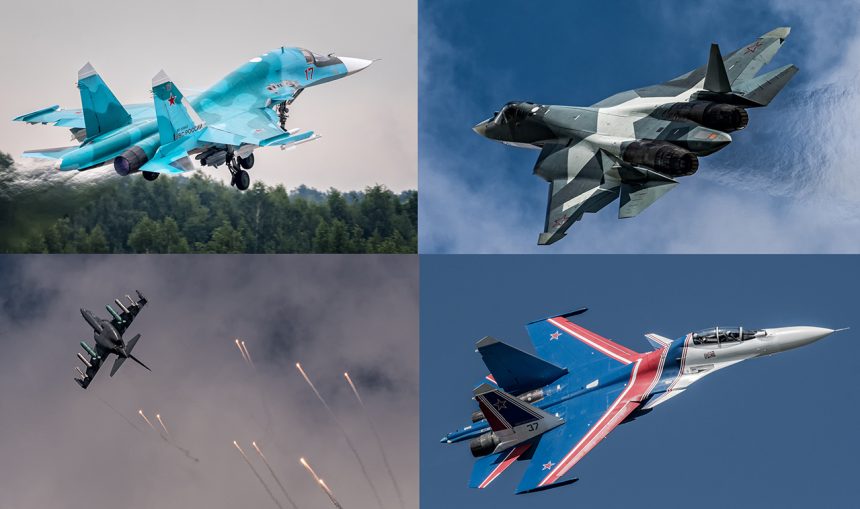Last week we have attended the MAKS 2017 Aviasalon in Moscow, held at the Zhukovsky/Ramenskoe airfield. MAKS is probably the only event where you can see all the latest Russian hardware (including the PAK FA) being demoed in dynamic displays.
MAKS is not a typical air-show, it should rather be seen as a trade exhibition with the aerospace industry gathering in order to sign new agreements and sell their products. Nonetheless, flying demos seem to be a good way to work on this, as you may also see what the given aircraft does in the air.
However, the static display at the Moscow Salon is equally impressive. This year it featured virtually any piece of contemporary Russian hardware one could imagine, as well as some legacy aircraft, including some exotic airframes, such as the MiG 1.44.
There were no PAK FA jets presented within the static display, which is a pity, however the remaining aircraft also brought one to awe. Ranging from Mil’s helicopters, Il-76MD90-A airlifter, through almost all varieties of the MiG-29 family jets, Sukhois (Su-35, Su-34, Su-30SM included), Tupolev’s bombers (Tu-22M, Tu-160, Tu-95MS), Kamov’s helicopters, with Tu-144 supersonic jetliner or Atlant, the Myashischev’s oversize cargo carrier, to finish with.
The Zhukovsky airfield is, undoubtedly, during the MAKS Salon, a place to be for any “aviation Russophile.”
The air show schedule was, according to frequent visitors at MAKS, not so impressive. Still, for someone like this Author – a first timer – it was jaw-dropping enough.
The show began with a display of the Russian helicopters, flying first in formation, just to perform individual displays later on – watching a giant Mil Mi-26T2 in the air performing graceful dance in the air is a thing one could not witness anywhere else. Attack helicopters also performed unique maneuvers. Unfortunately, Kamov’s designs only did a flypast, with no dynamic displays involved.
The helicopters portion of the show was followed by a dynamic display of the Il-2 Sturmovik aircraft, the world’s second surviving and flying example (reportedly, one more aircraft of this type is also flying in the United States). Notably, the pilot did not make it easy for the warbird, pushing it quite hard throughout the demonstration.
SR-10 trainer with its wings swept forward also took the air.
The show also featured several displays by United Federation of Ultralight Aviation of Russia and civilian aerobatic teams like “The First Flight”.
Nonetheless, the MAKS show is attended mainly for the “heavy metal” portion of it. And the prelude to that part came in a form of a MiG-29M2 display, which, nonetheless was only a starter.
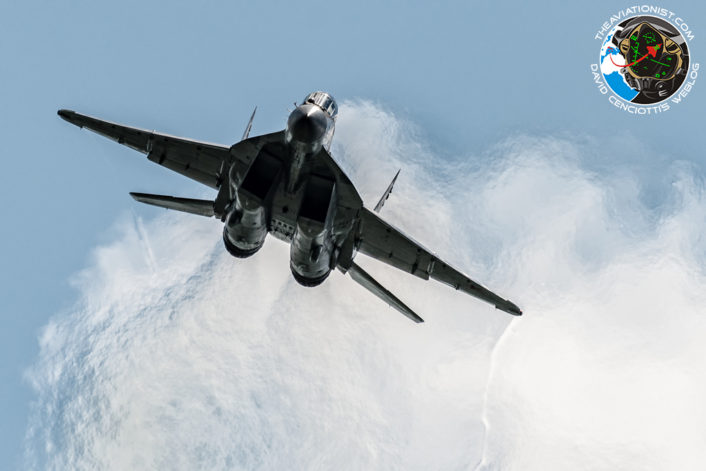
Then, two Yak-130 (trainer and a combat variant) jets also performed an interesting duo-display, with plenty of flares involved.
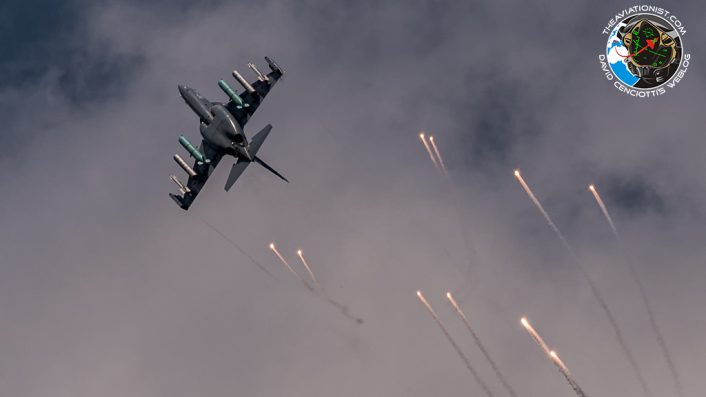
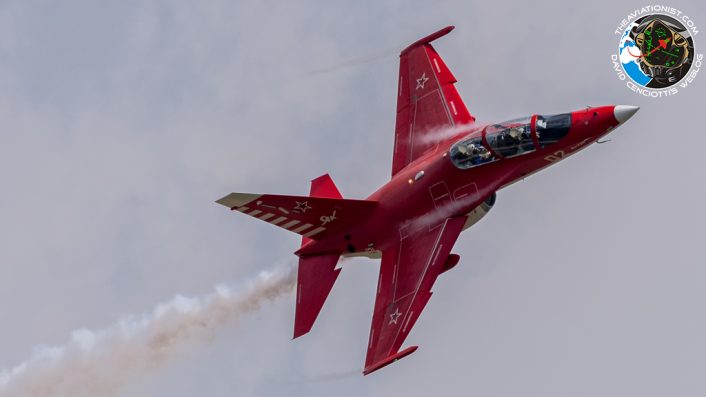
After that, the Sukhoi company’s pack of aircraft, including two T-50 PAK FAs, a Su-35 and a Su-34 took off into the air, showing off the maneuverability capabilities of the latest Russian jets. The display schedule varied across the days, and on the weekend we could have also witnessed a flight of four Su-35s performing a display.
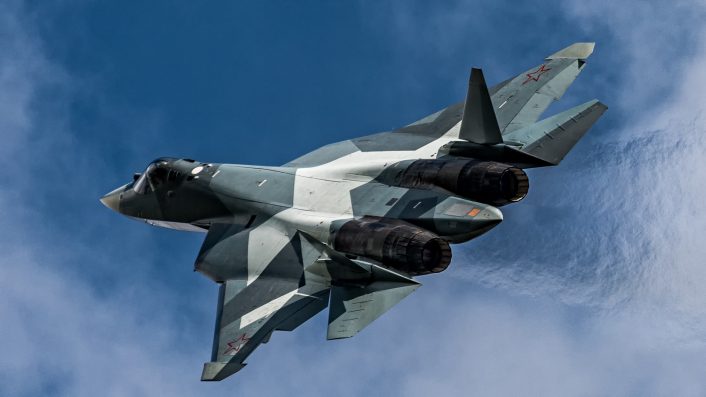
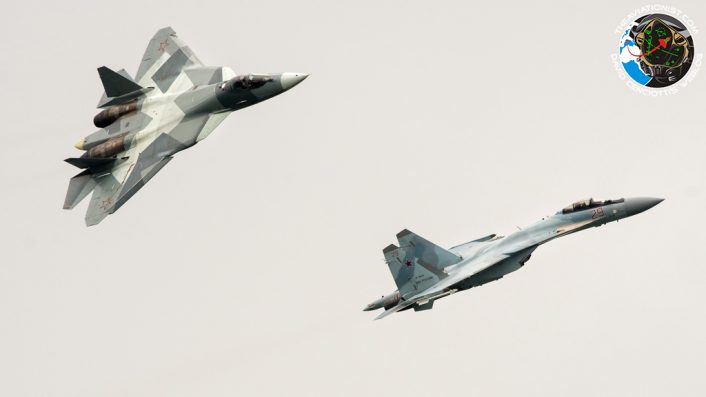
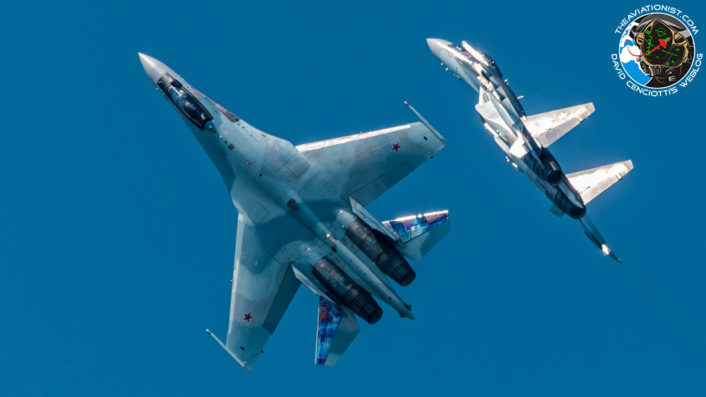
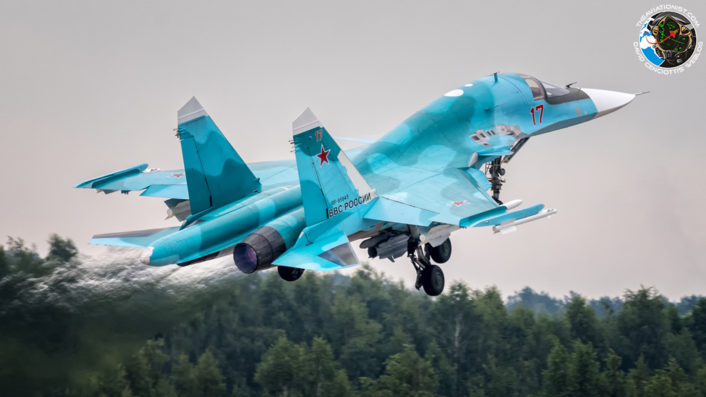

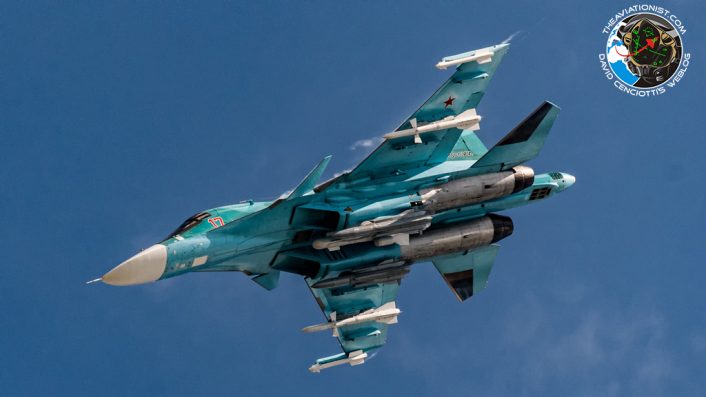
To add a spice to the whole dish, two more aerobatic teams were using the Su-27 derivatives: a team of the Russian Navy, flying two Su-30SMs and performing a tactical display with air combat maneuvering involved, and the “Russkiye Vityazi” (the Russian Knights) team, flying six Su-30SMs in a ballet-like, breathtaking group display. Hearing 12 mighty Saturn engines is an experience which has to be lived-through and cannot be described vividly enough.
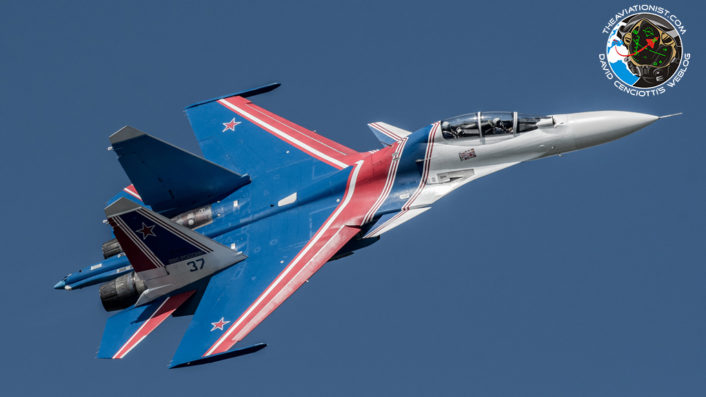
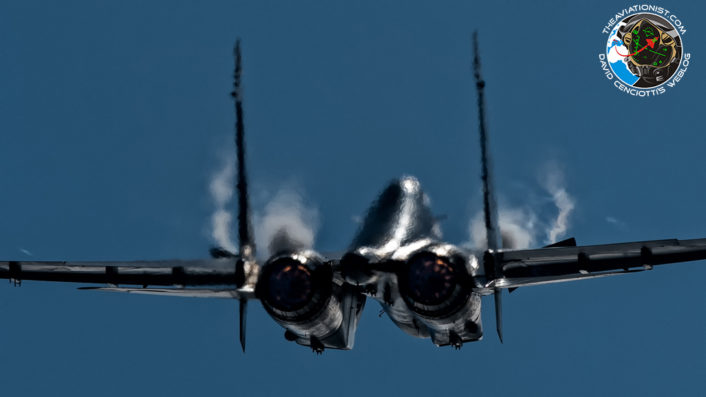
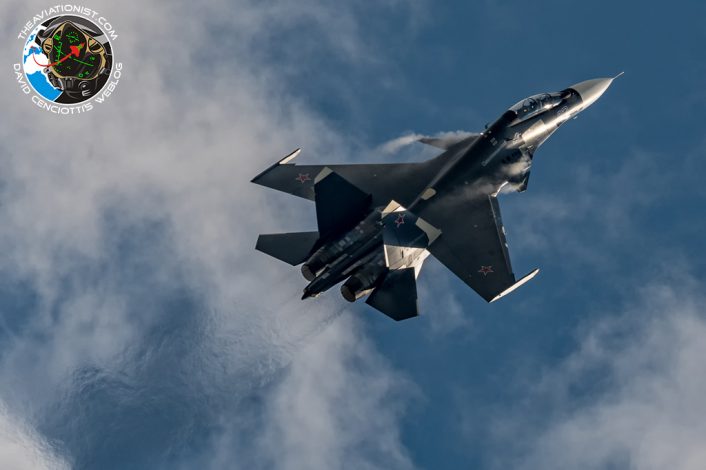
Last, but not least, the displays were complemented by a show by the Strizhi aerobatic team flying the MiG-29s.
Notably, the Russians show also featured loads of flares, with quantities very much exceeding what one can witness anywhere in Europe – this concerns the Strizhi and the Russkiye Vityazi displays.
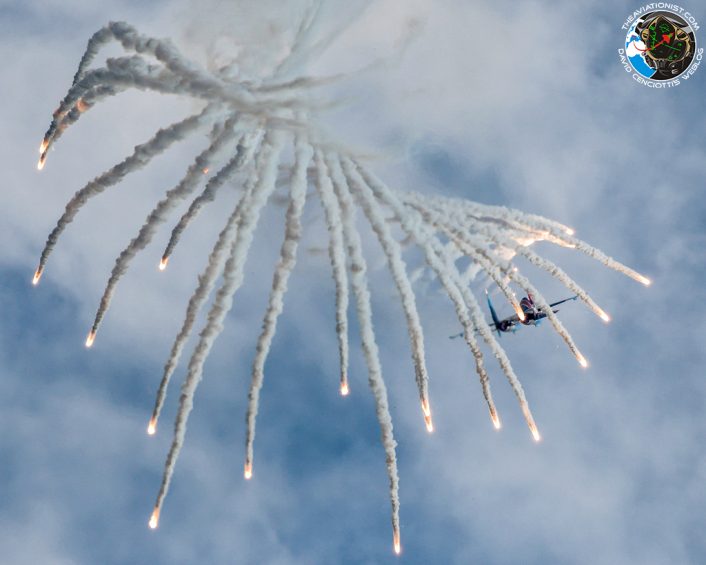
Launching hundreds of flares simultaneously is beyond spectacular. Moreover, the weather conditions at MAKS, involving high level of humidity in the air, mean that some awesome “irisation” phenomena could be captured. This happens when the clouds of condensed vapor form on the airframe as the jet is seen against the sun: one can witness a rainbow being trailed behind the jet. The weather at MAKS was varied, from storms to 30 degrees centigrade heat, hence there were many chances to witness the aforesaid sights.
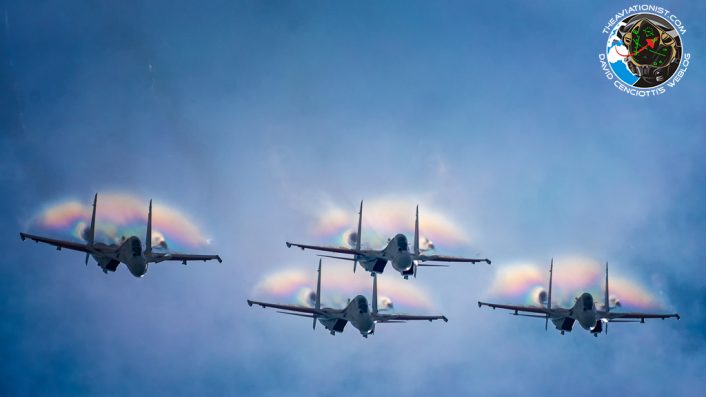
When it comes to foreign participation in the show, this year, due to the political tensions with Russia, it was somewhat limited, and only two foreign guests performed their displays in the air – the Al Fursan aerobatic team which is very much reminiscent of the program demonstrated by the Italian Frecce Tricolori group (it also involves the very same type of aircraft) and the Baltic Bees Jet Team, hailing from Latvia.
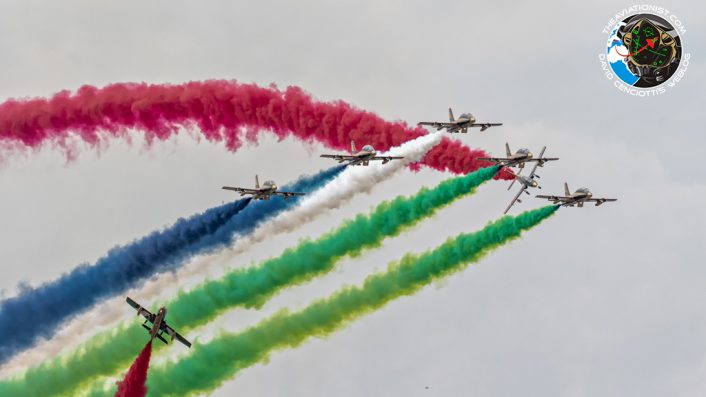
Overall, even though the MAKS show was said to be more modest than its former editions, undoubtedly it is an event worth attending. The sole fact that one can witness the Russian most advanced aircraft flown by the best pilots who know the aircraft’s capabilities by heart, is enough to go to Moscow.
Moreover, when attending MAKS, it would be a sin not to visit the Monino Museum of the Russian Air Force, which is just 2 hours train ride from the Kazansky train station in Moscow. The collection of aircraft gathered there, including the Sukhoi T-4 or some unique prototypes is, without any doubt, also worth seeing and appreciating.
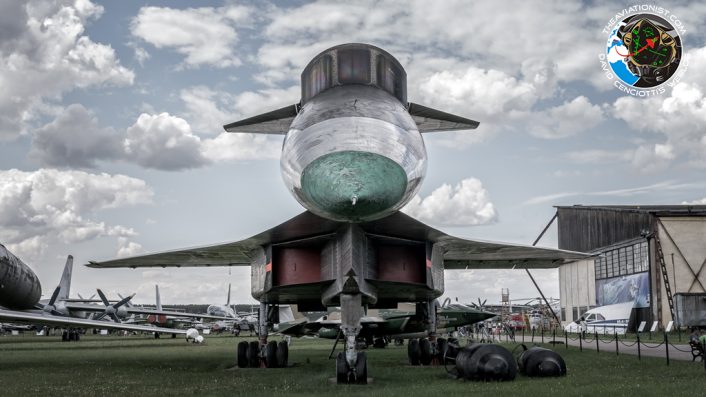
Many thanks go to Foto Poork who assisted us in obtaining the media accreditation and supported the visa procedure in Poland, and to Andrzej Rogucki who provided us with assistance in getting around Russia without getting hurt.
All Images: Jacek Siminski

